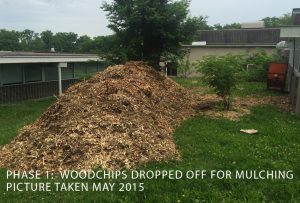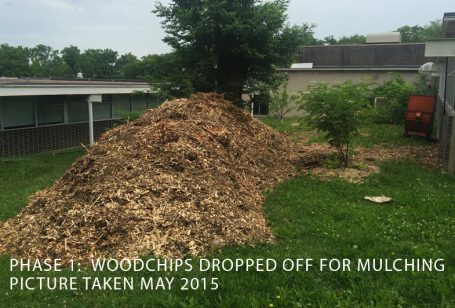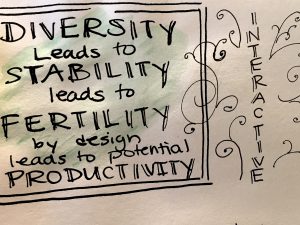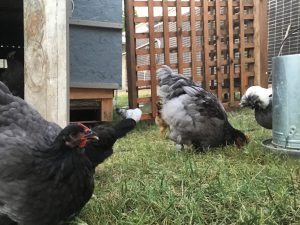One of the biggest pitfalls for educators, permaculturists, and business folks alike is the subject of overcommitting themselves. Like Bilbo Baggins, we often tend to spread ourselves too thin, like butter over too much bread. When we are building (both projects, land, and people), this tendency of overcommitting often results in half-finished projects, burned out brains, and enough stress to go around. Not even a dirt ninja can overcommit on projects for an extended period of time. It always results in burnout. Always. In addition, the lack of finished and excellent projects often result in a system that is not sustainable, producing at maximum capacity, or supplying for the people maintaining it. This is where the 5 keys to healthy building take us from burn out to abundant living.
Before we begin, let’s be honest. These five keys to healthy building are ones that I have learned, am learning, and will continue to learn. Every good leader is a going to face the temptation to become unbalanced in these areas, but by revisiting them with frequency, we really can keep our commitments in check. I am the king of overcommitting, so I am essentially an expert on this subject due to repeated and frequent trial and error.
Half Started Projects
 For the urban gardener or dirt ninja, we tend to start new vegetable gardens, fruit tree guilds, and hugelkultur swales, but all too many times, get sidetracked from focusing on one project only to start another one. On most permaculture worksites, you can walk around a see 10-15 (or more) projects that are started, but yet to be successfully completed. On these worksites, one dynamic which often follows is the systems are not maintained, managed, or allowed to yield at their fullest potential. Not to mention the unpleasant side-effect, which includes ugly properties with piles of “stuff”. When managed well, a permaculture system should both create successful yield, and provide beauty for the eye.
For the urban gardener or dirt ninja, we tend to start new vegetable gardens, fruit tree guilds, and hugelkultur swales, but all too many times, get sidetracked from focusing on one project only to start another one. On most permaculture worksites, you can walk around a see 10-15 (or more) projects that are started, but yet to be successfully completed. On these worksites, one dynamic which often follows is the systems are not maintained, managed, or allowed to yield at their fullest potential. Not to mention the unpleasant side-effect, which includes ugly properties with piles of “stuff”. When managed well, a permaculture system should both create successful yield, and provide beauty for the eye.
Whether you are examining the habit of overcommitting from a business management, leadership, or permaculture perspective, the keys to overcoming this trap are the same. The five keys to healthy building allow the leaders to both grow themselves, their business, and the people around them. This system of personal and professional development involves healthy levels of input (e.g. learning) resulting in vigorous levels of output (e.g. the project, growth, or fruit produced).
One Thing – Just One
The key number to remember is ONE. One commitment for every one area. No more, no less. This simple rule helps keep leaders healthy in their minds, bodies, and spirits. By remaining focused on one area at at time, using these five outlets, we keep the diversity needed to prevent boredom, while retaining the focus needed for success. Keep the first things first and remember – one. Just one.
5 Keys to Healthy Building
In each of the following five areas, the leader should choose a single project or focus at a time, in order to maintain a peaceful and productive balance. Obviously not all leaders are created equal. Some focus better with multiple plates spinning at once, while others can only focus on one thing at a time. The beauty of using these five keys is that they allow for multiple expressions, while still helping balance various types of commitment. The following are the 5 keys to healthy building:
- Learning: This input helps maintain personal growth and development. The learning input includes reading, listening to podcasts, taking classes, or other tasks that aid in personal growth. As productive and flourishing human beings, we should continually give ourselves to personal growth. Walt Disney said, “We keep moving forward, opening new doors, and doing new things because we are curious, and curiosity keeps leading us down new paths.” At the same time, too much of this key commitment (learning) can result in become knowledge fat with little productivity. Some of the greatest thinkers will never be known, because they spent too much time thinking and not enough creating.
- Giving: This is the output / outcome that helps keep a balanced leadership lifestyle. This key of building focuses on sowing back into others through volunteerism, tithe, serving the poor, etc. Within every human being is the innate need to give back and make an impact on the community around them. In permaculture, the foundational value is on “people care”, which gives back to the community at large. Overextending our ability to give, however, can result in an unbalanced income or profit, which goes against the third principle of permaculture – fair share.
- Brainstorming: This type of key commitment is the vision-forming stage of the building process. By committing to one brainstorming project at a time, we keep our eyes forward on the future. Looking ahead gives a builder hope that new things are on the horizon and inspiration in the creative process. In regards to permaculture, Geoff Lawton says, “Spend 10 hours of observing and thinking for every one hour of action.” However, at the same time, too much dreaming and brainstorming often results in little action. Great ideas with lack of follow-through are not productive elements in a system and result in brain clutter.
- Building: The building commitments are often the ones that need most of your time and attention, because these are ones that leaders are actively creating. They are new systems that have just come out of the planning phase. Even with the best planning, leaders who over commit to building get burned out, emotionally drained, and physically exhausted. The danger is building more than one project at once is that most of the time, we do not realize we are overcommitted until it’s too late. There is, however, productive abundance when we build from a peaceful and focused place. This is the opportune phase to be hands on, active, and committed. Stay focused here and do not try to build more than one area at a time, otherwise your permaculture property will have handfuls of half-started projects that never reach their potential. Just because you are should do the project one day does not mean you should do it today. Just because it is a good idea, does not mean it’s a great idea. Just because someone should do it, doesn’t mean it should be use. Instead of taking it all on yourself, use this time to train others for the final key of healthy building.
- Maintaining: In this final key commitment type, we make the decision of what others are capable of in order to create the best system for maintenance. We now examine whether the end justifies the means; we decide if the system is producing enough to keep active. If a system is not sustainable, it will eventually become unbalanced and fall into chaos. Fred Elliott, a business man and church leader from Clermont, FL, once said, “You need to determine first if the project is a priority that needs to be done right now or if you should wait. Secondly, determine if it’s something you should train others to manage, or thirdly, decide if it’s something you need to maintain yourself.” Once you figure out maintenance, you are freed up to build the next project and begin the building process anew.
 When we actively engage in a permaculture creative process, these 5 keys to healthy building help us live from a peaceful, balanced, and productive place. In order to experience the power of a focused life, it’s important to revisit these five keys and ask ourselves a few questions. First, “What am I committed to in each of these areas right now?” The second question is “How do I limited myself to ONE commitment per area?” Finally, “Am I overcommitted and lying to myself about what I can responsibly accomplish?”
When we actively engage in a permaculture creative process, these 5 keys to healthy building help us live from a peaceful, balanced, and productive place. In order to experience the power of a focused life, it’s important to revisit these five keys and ask ourselves a few questions. First, “What am I committed to in each of these areas right now?” The second question is “How do I limited myself to ONE commitment per area?” Finally, “Am I overcommitted and lying to myself about what I can responsibly accomplish?”
By following these healthy habits, we are able to be managers of productive and abundant systems, businesses, and families.
Action Item
 Make a list of these five areas and what you are currently doing in each. Narrow it down to five projects total (one for each area) and practice it for 2-weeks with intentional focus. Do not waver and do not take on any other commitments. Revisit after two weeks and examine the fruit of your labor and how you feel as a person.
Make a list of these five areas and what you are currently doing in each. Narrow it down to five projects total (one for each area) and practice it for 2-weeks with intentional focus. Do not waver and do not take on any other commitments. Revisit after two weeks and examine the fruit of your labor and how you feel as a person.
Leave your thoughts in the comment area below and tell us what you think.



 As a permaculture test site, TDA has been hosting yearly gardening courses for 7-12th grade students, and in 2016 hosted its first Permaculture Design Certification Course (PDC). As a test site, there are several models of permaculture related designs taking place on one property. Each of these has a direct connection to the students, classrooms, and families that the school serves.
As a permaculture test site, TDA has been hosting yearly gardening courses for 7-12th grade students, and in 2016 hosted its first Permaculture Design Certification Course (PDC). As a test site, there are several models of permaculture related designs taking place on one property. Each of these has a direct connection to the students, classrooms, and families that the school serves.




